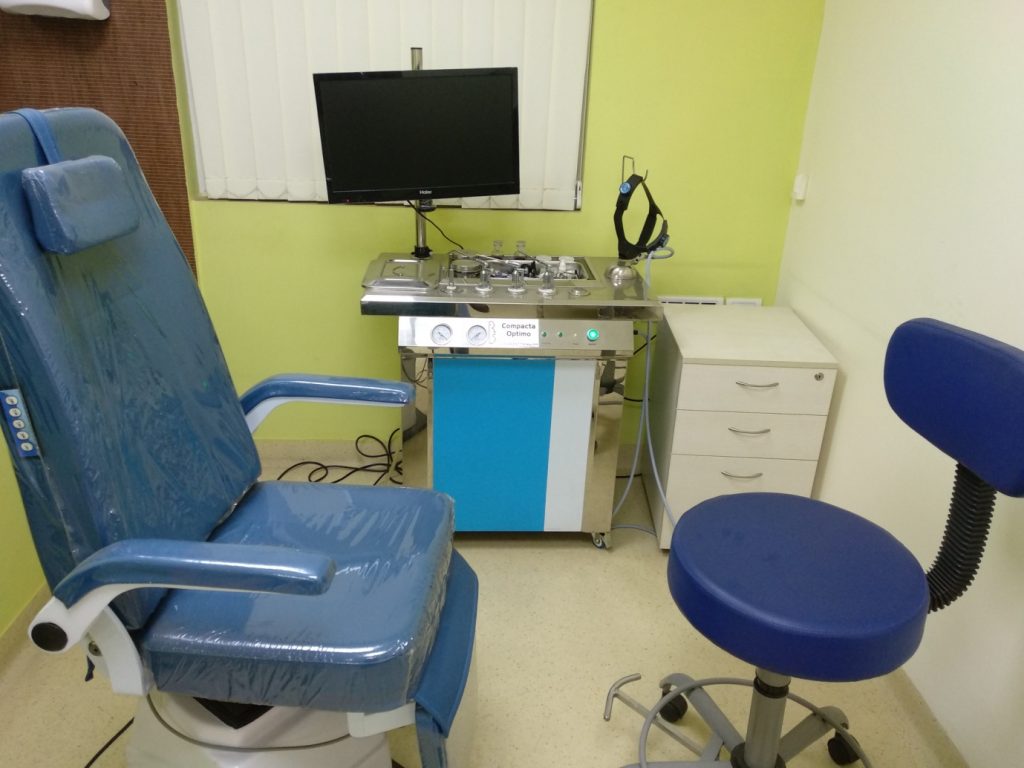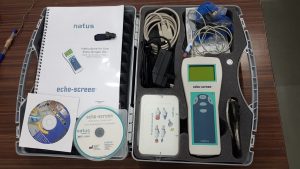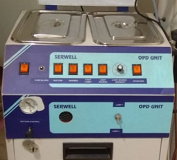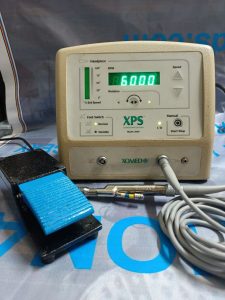
If you are planning a ENT specialty hospital with both OPD and OT set-up, you will need all equipment needed to examine Ear, Nose and Throat. The major ENT equipment you may need for ENT hospital include the ENT OPD unit, Sinuscopes, Otoscope, nasopharyngo-laryngoscope, operating microscope, debrider, coblator, CO2 laser and specific surgical instruments sets.
Diagnosis and treatment of both adults and children with diseases and disorders of the ear, nose, throat (ENT), which includes sinuses, larynx (voice box), oral cavity, and upper pharynx (mouth and throat) and related structures of the head and neck is also called Otolaryngology. A complete ENT examination generally includes inspection of the ears, nose, throat, face and neck. A head & neck examination usually involves examination of Pharynx, Larynx, and Thyroid Gland apart from oral cavity, salivary glands, nose, sinuses, jaw and temporomandibular joints.
Before listing out medical equipment for ENT hospital, let us understand what are the various examinations done and what are the medical equipment used to do so?
Download ENT Equipment List for just Rs 500
Ear Examination
The following medical equipment for ENT hospital are needed for Ear examination:
• An Otoscope is used to perform Otoscopy or examination of the ear. Diseases which may be diagnosed by an otoscope include otitis media and otitis externa, infection of the middle and outer parts of the ear, respectively. Otoscopes can also be used for examining patients’ noses and upper throats. Most commonly used otoscopes in OPD are monocular devices, which provide a 2-dimensional view of the part being examined. Otoscopy is also done using a binocular microscope (ENT microscope), which provides a 3-dimensional view (includes depth perception) as well as magnification, which is useful in doing wax removal and other procedures safely.
• If a patient comes with complaints of hearing loss, ringing in the ears, or balance disorders, audiometric testing is done. It is conducted in a sound-proof room with an audiometer. An audiometer is a machine used for evaluating hearing acuity, consisting of a hardware unit connected to a pair of headphones and a patient feedback button to record their feedback. An audiologist records the quietest sounds you can hear at each frequency, in each ear in the form of a graph ‘audiogram’. Our ears have three distinct parts: the outer, middle, and inner ear. Audiometry tests can detect whether you have sensorineural hearing loss (damage to the nerve or cochlea) or conductive hearing loss (damage to the eardrum or the tiny ossicle bones).
• Tympanometry is a quick and simple way to measure the barometric pressure in the middle ear and to assess fluid behind the eardrum in small children using a tympanometer.
• CT scans of the sinuses and middle ear can also be done if necessary.
 Nasal Examination
Nasal Examination
The following medical equipment for ENT hospital are needed for nose examination:
A nasal examination is usually performed with a headlight or mirror and a handheld speculum that allows examination of the nasal septum and turbinates. The ENT visit may include examination of the voice box and the back of the nose using hand-held mirrors in the mouth. Examination of the neck includes the lymph nodes, salivary glands and thyroid gland. Nasal endoscopy may be done as a diagnostic procedure in patients with nasal, sinus, or allergy complaints. Abnormal swelling, enlarged turbinates, nasal polyps, septal deformities or sinus drainage, can all be identified through nasal endoscopy.
Throat Examination
For throat examination, the following medical equipment for ENT hospital are needed:
If a patient comes with complaints in the throat, such as hoarseness or swallowing difficulty, a flexible endoscope may be used to examine the back of the throat and voice box through the nose. This procedure is called Nasopharygoscopy – A procedure done by an ENT doctor, in which the doctor inserts a flexible scope or nasopharyngoscope through the nose and reaches it to the back of the throat to examine the nasopharynx.
Laryngoscopy is a procedure done by an ENT specialist to examine the larynx, by inserting the laryngoscope through the mouth or nose
The above section covers various types of examinations and diagnostic requirements and equipment. However ENT specialists are physicians trained in both the medical and surgical management of conditions that affect the ear, nose or throat.
ENT Surgery
The most common ENT surgical procedures are Adenoidectomy and tonsillectomy , Ear surgeries like, myringotomy tube insertion, tympanoplasty, stapedectomy, Septoplasty, rhinoplasty, Sinus surgery, Tracheotomy, laryngectomy etc. ENT surgery is also used in reconstructive and cosmetic surgery to correct deformities or injuries. Ear, Nose, facial prosthetics are now commonly used for rehabilitative surgeries post injuries or Head & Neck Cancer treatment.
What are the medical equipment for ENT Hospital?
ENT OPD equipment
ENT Treatment Unit – A good ENT Treatment Unit Set will have the following equipment :-
Suction, Fiber Optic Head Band, Sprayer, Fiber Optic Otoscope, Mirror Re-warmer, Instrument Tray, Cold Light source – Double Outlet, Endo Holder, Fiber Optic Cable, Cautery, X-ray Lobby (or) Monitor. Optionally the unit may include – 0 deg. Endoscope, 70deg. Endoscope, CCD Camera, Side Cabinet, Microscope, Patient Chair, Doctor Chair and Video Imaging System.
Apart from the above hospital requires – Tympanometer, Nystagmograph (used to diagnose the cause of vertigo / dizziness) and audiometry set-up.
Endoscopy equipment such as nasopharyngo-laryngoscope, Sinuscope, video otoscope, Laryngoscope or telelaryngoscope, bronchoscope or esophagoscope may be made available depending on the diagnostic capability the hospital would like to have.
ENT surgical equipment
For ENT surgery an ENT operating microscope, Cryo surgical system, Cryo probes, spot lamp, Surgical Co2 Laser, diode laser, Cold Light Source, LED Head light with camera system, video imaging system, Coblator, debrider or nasal power drill, micro-motor, nasal or sinus irrigator, temporal bone dissection unit, RF Cautery etc. would be required from time-to-time.

The above is apart from all the basic OT requirements including an OT Table, anesthesia machine/ Boyles apparatus, suction machine, multi-para patient monitor, ECG machine, sterilization equipment , sealing machine, scrub sinks, fogger, surgical instruments, OT light, instrument trolleys/stands, patient trolley and a few recovery beds.
Check-out ENT equipment both new and used available with PrimedeQ .
Download a list of equipment for an ENT Hospital with cost estimates @ just Rs 500.
Download ENT Equipment List for just Rs 500
Write to us at [email protected] for more details.Or Call us on +917019759765
